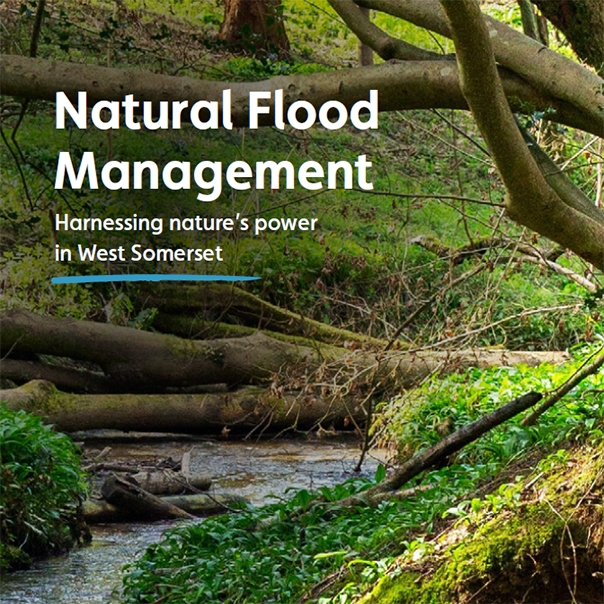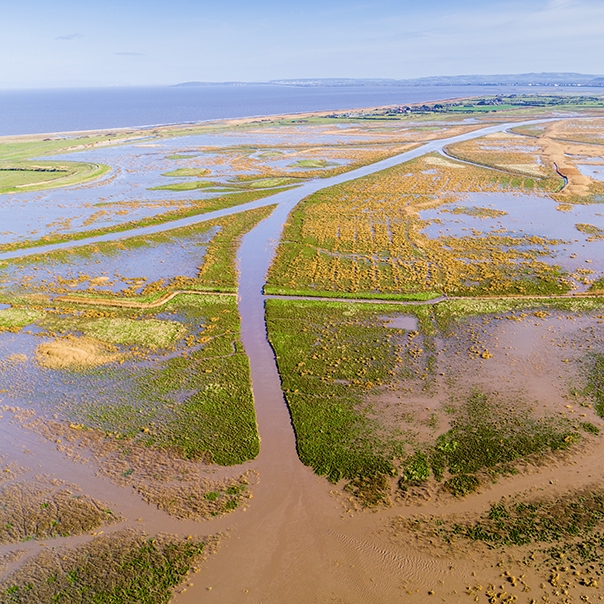Natural flood management
Using nature-based solutions to reduce flood risk
Climate change is bringing more frequent and intense flooding to the UK. It’s recognised that traditional defences like concrete dams, embankments and walls are no longer going to be enough to protect us.
We need alternative solutions.
WWT is working to develop a more sustainable and efficient way to manage flooding using wetlands.
Read our Wetlands for flood resilience route map to find out more.
What is Natural Flood Management (NFM)?
Natural flood management is an approach that uses natural wetland features in the landscape like ponds, floodplains and wet woodlands to slow the flow of water and reduce flood risk.
NFM works at a catchment level. Some of the measures slow down rainwater and stop it accumulating and flowing across the surface. Others act upstream to slow down water flow and reduce peak rainfall surge.

NFM makes use of a range of measures. It is this mosaic of features, rather than the individual interventions, that can have the effect of reducing flooding in the immediate vicinity and further downstream.

NFM toolkit
Learn more about the different NFM measures, funding and advice on introducing NFM.
Download toolkitWhy do we need Natural Flood Management?
Floods are nothing new. We’ve lived with them for thousands of years. They replenish the land with nutrients, boosting agriculture and providing food and water for people and livestock for the rest of the year.
However, their frequency and impact is becoming greater and increased flood risk is now predicted to be one of the UK’s top climate change threats. Scientists predict that one of the impacts of our climate emergency will be heavier rainfall and greater frequency and strength of storms.
It’s not just climate change that’s to blame.
For two hundred years we’ve followed the ‘getting rid of water as quickly as possible’ approach; cleaning out watercourses, straightening and sanitising them to make water flow away as quickly as possible.
The problem with this is that those further downstream get flooded.
Physical flood barriers like concrete walls and dredging rivers can have an important part to play in protecting our homes and businesses against flooding. However, they’re expensive, and building and maintaining vast flood defence schemes for every town, village and property that floods is prohibitive.
Natural flood management (NFM) is an alternative that’s attracting increasing political and public interest. It’s being recognised that in some cases, NFM can complement traditional flood management techniques, offering a more natural, sustainable and cost-effective way to manage flood risk.
How does NFM work?
NFM techniques work with the natural features of the catchment to slow down or store flood waters.

NFM works in three main ways.
- Firstly, features like ponds help create temporary storage which will fill up during a flood and then empty slowly.
- Secondly, NFM helps slow the flow by increasing the resistance to surface and in-channel water flow, for example by planting trees and hedgerows and by creating wet woodlands and woody dams.
- Thirdly, NFM features work by increasing water losses, either by encouraging more water to drain into the ground or to be lost back into the atmosphere.
What are the additional co-benefits of NFM?
NFM can bring other benefits including improved biodiversity, increased wellbeing, enhanced water quality and strengthened community cohesion.
Who’s it for?
Every farm and community will have land with features that could play a role in natural flood management.
Natural flood management structures have been designed so that they do not significantly impact on farming, are typically small in size, simple to install and can be considered an extension to the land’s drainage system.
From large landowners to those with smallholdings and rural communities, these low-cost techniques are easily accessible to all.
The evidence
The evidence base for NFM and the wider benefits it can bring is building all the time. In recent years WWT has successfully delivered a wide range of NFM projects. We are now using the skills and expertise we’ve learnt to support others looking to use NFM as a more sustainable and efficient way to manage flooding.
Two Valleys: Slow the flow
We have been delivering NFM in West Somerset since 2018. This project demonstrates how these nature-based solutions can help reduce flood risk and deliver wider environmental and societal benefits.
Find out moreThames Catchment NFM
WWT is providing expert advice on NFM in the Thames region. We are also supporting others to put NFM into practice.
Find out more

